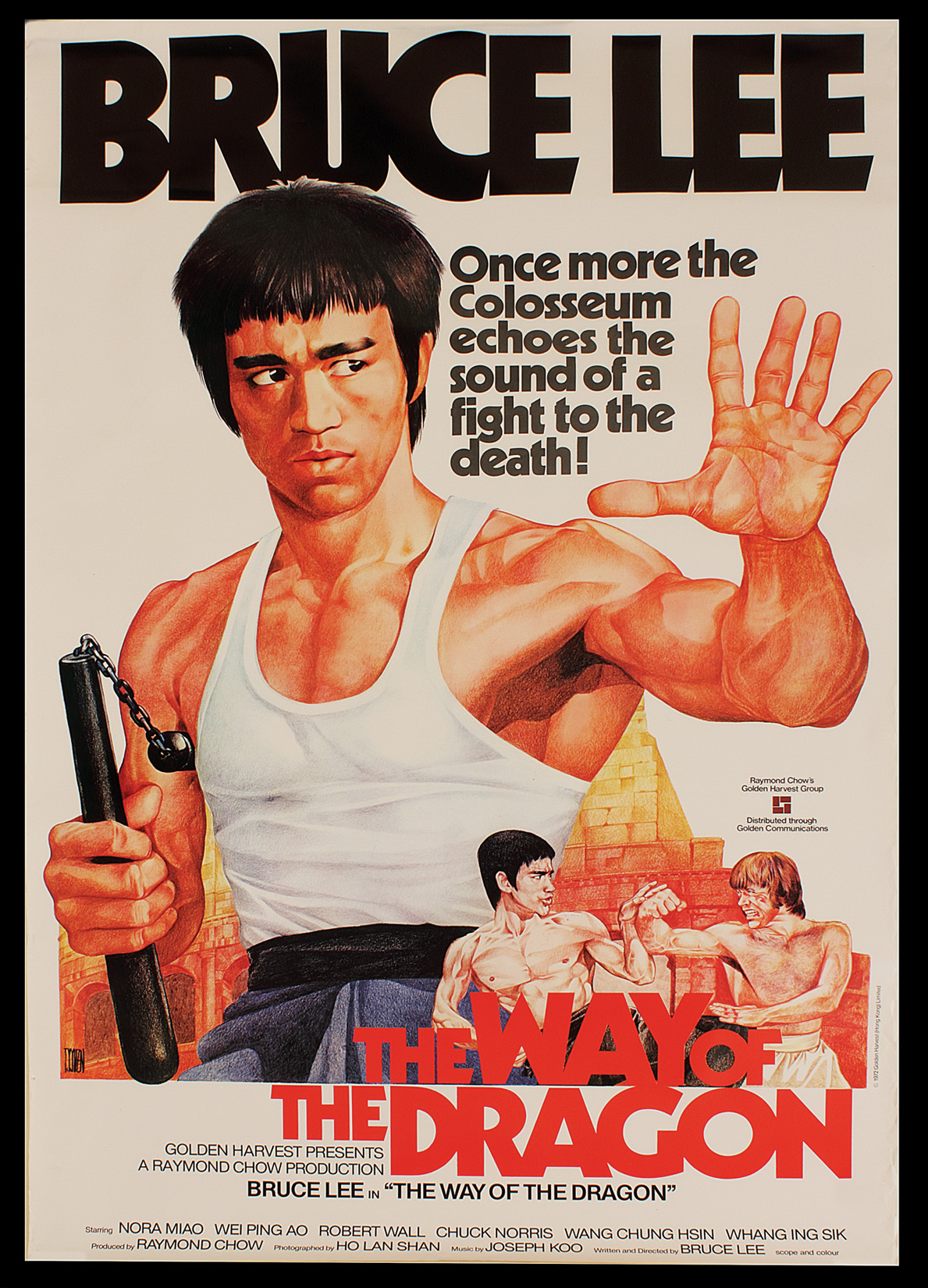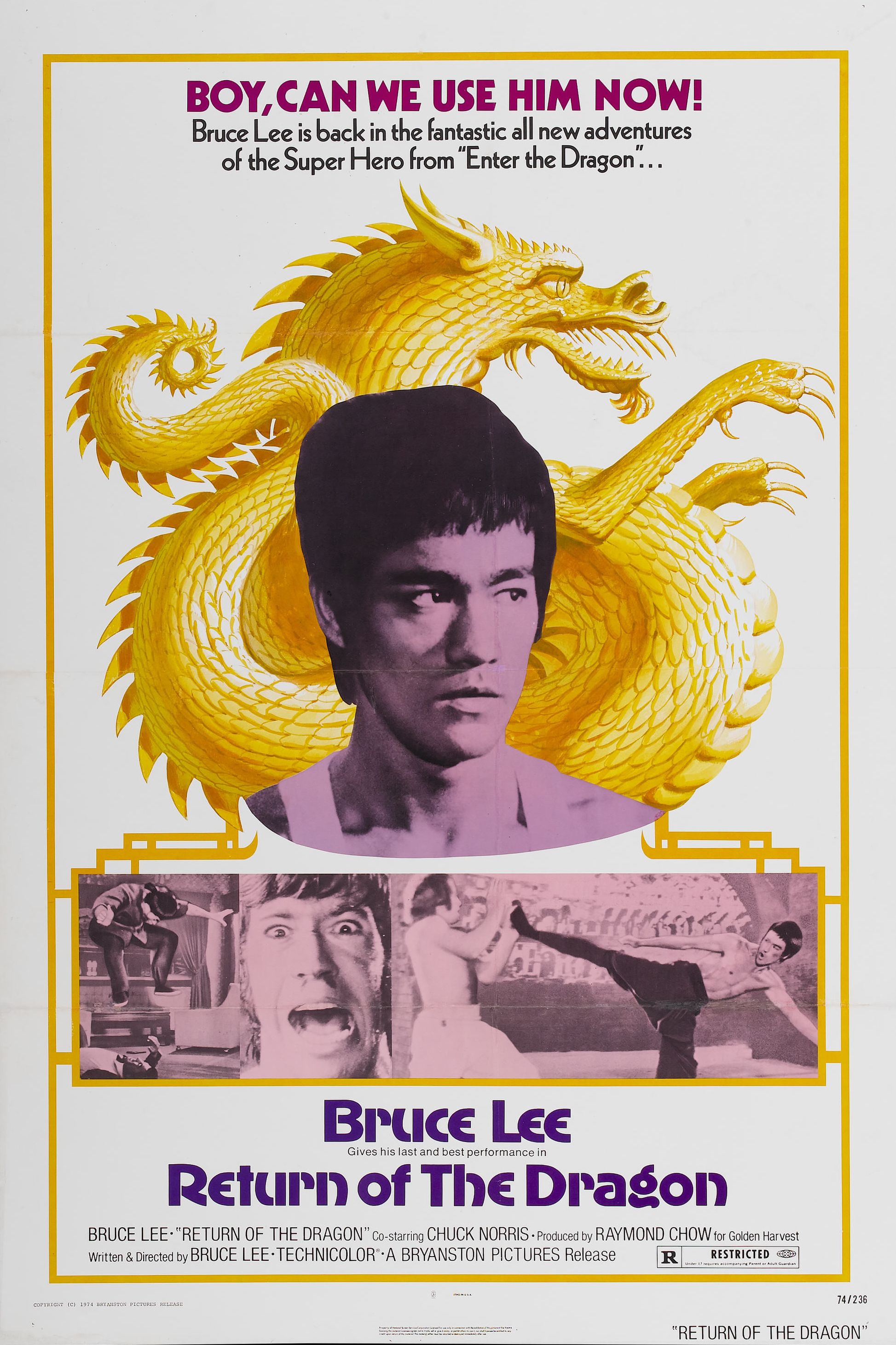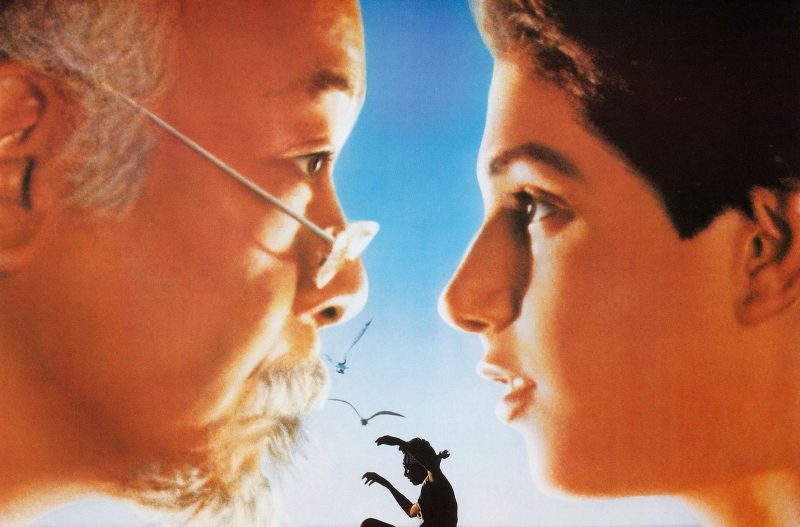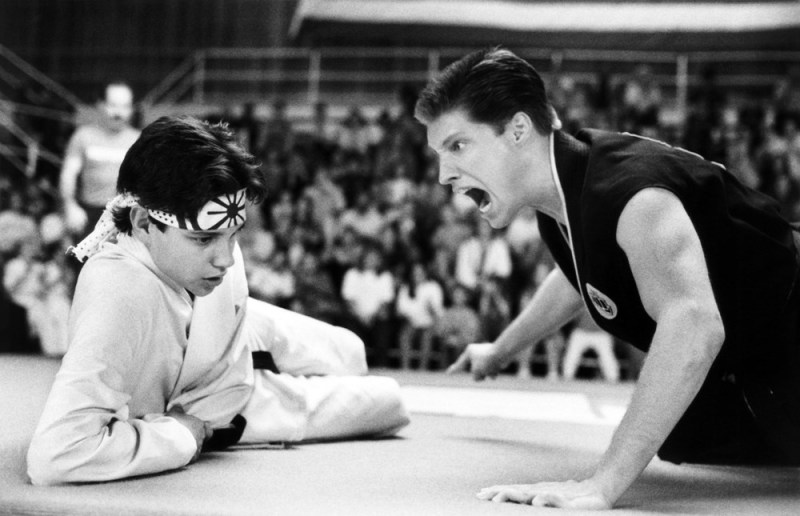
Bruce Lee meets Chuck Norris in a battle for the cinematic ages
So far, my Bruce Lee odyssey has toured The Big Boss, a flawed film saved solely by Lee’s presence, and Fist of Fury (aka Chinese Connection), a fittingly grand revenge tale with jaw dropping-action. Though Fist of Fury was a huge improvement on The Big Boss, I felt the director, Wei Lo, still didn’t understand exactly what he had in Lee. Of course, the only person capable of understanding Lee’s full potential was the man himself, so it was fitting that for his next movie, Way of the Dragon, Lee parted ways with Wei and took directing into his own lightning fast hands.
Lee doesn’t play it safe, either. Instead of coming out of the gate with sweeping period grandeur or a brutal brawl, the first act of Way is essentially a breezy, fish-out-of-water comedy in contemporary Rome; something you would expect more from Rock Hudson than the greatest martial artist in history. It could have been a disaster on the level of Jingle All the Way, but in a testament to Lee’s talent, he nails it from the first frame.
The movie begins with Lee being stared down, not by an opponent, but by a stuffy old Western woman while standing in the Rome airport. The kind of prejudice Lee experienced being an Asian actor in Hollywood is perfectly expressed as he uncomfortably smiles at the entitled white woman, hoping she will get the hint (she doesn’t). Without saying a word, he establishes that his character, Tang Lung, as a stranger in a strange land stumbling through cultural and language barriers while holding on to his dignity (like when he mistakenly orders five bowls of soup for lunch and precedes to eat them all to save face).
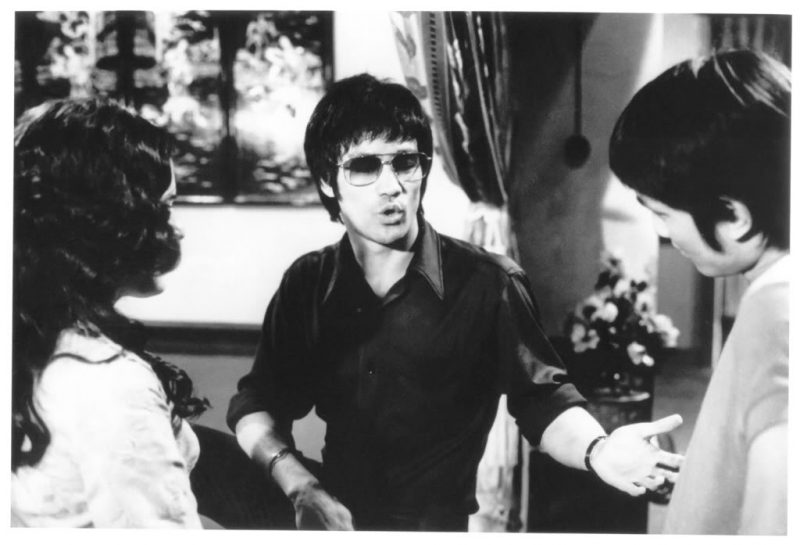
Judged on the first half hour, one could even assume this was a screwball romantic comedy. Chen Ching Hua (Nora Miao) is Tang’s complete opposite: modern, cosmopolitan, and thoroughly Westernized. She asks her uncle in Hong Kong for help when the local mafia begin to muscle in on her restaurant, and is visibly disappointed when he sends her a bumpkin from the mainland instead of a lawyer. She gives Tang nothing but eye rolls and disapproval as he unsuccessfully tries to blend in to swinging 70’s Rome, especially when his attempts to follow her advice and be friendlier to strangers gets him picked up by a hooker (Malisa Longo, credited as the Italian Beauty).
Movement number 4: Dragon seeks path. Hi-yah!” (Tang kicks, knocking a hoodlum unconscious) “Dragon whips his tail!
Tang Lung
Lee is confident enough to play up Tang’s comedic missteps because underneath all the innocent awkwardness, we all know he’s still Bruce Lee. He can’t cover that up for long. He teases it out, though, first by getting interrupted before he can demonstrate his moves to the karate practicing restaurant staff, and later by being in the bathroom when the mafia goons first show up. Chen and her staff’s opinions on this country bumpkin abruptly change when they finally get to see Tang in action, as he effortlessly trashes a group of thugs lead by who I assume was ‘70s radio personality Wolfman Jack (I could be mistaken). I love watching Chen’s perpetually dismissive expression melt into “oh my…”
One commonality all of Lee’s movies share is that once he enters the fray, the evil minions do not stand a chance. Way’s band of miscreant muscle are unique, though, at least in appearance. They are a far cry from the wise guy crowd, more like Blaxploitation meets California surfer dudes. A little threatening, a little goofy, perfect for the tone. Lee’s fight choreography is more lighthearted than usual, while remaining just as impressive. Unlike Wei Lo, he doesn’t bother with exaggerations or staged superhuman feats (other than Tang’s Hawkeye-like accuracy with a dart when disarming gun-toting hoods), not when his own whirlwind moves are the ultimate effect.

Happily, Lee does include a variation on my favorite bit from Fist of Fury, what I like to call “the smartest guy in the room.” After thoroughly pounding a dozen goons with ease, Tang gives one trembling knucklehead the option to scram, high-kicking the light fixture over his head for emphasis. Wisely choosing discretion over concussion, the bright lad bolts for the exit, never to be seen again. My hope is that he rethought his life of thuggery and took up an honorable Roman profession like a tour guide or fresco painter or something.
Nora Miao deserves a great deal of credit for Way’s success. She acted alongside Lee in both of his prior movies, but never with such a substantial role. Their timing and chemistry are fantastic, and she gives a wonderful physical performance. Though she did not get any fight scenes like in Fist, Chen is no damsel. She never considers selling out to the mob, and even when she is kidnapped by them and threatened at knifepoint, she is more irritated than scared. She gives the unnamed Big Italian Boss (Jon T. Benn) her most wilting frown of disapproval that says, “you assholes are really going to get it now.”
The Big Italian Boss and his right hand man, Ho (Ping Ou Wei playing a flamboyantly gay caricature in a bit that has not aged well), finally realize they need to call in some ringers to handle Tang. Enter Robert Wall and Ing-Sik Whang, two real-life martial arts champions (a front runner to using wrestlers and UFC stars in contemporary action movies). These two up the game and are more than enough for the novice fighters from the restaurant, but can’t hold up against Tang.

The headliner henchman is, of course, Colt, played by none other than Chuck Norris. Known at the time more as an International Karate Champion than as an actor, Norris is given a spectacular entrance, exiting the plane like a golden slab of pure American virility. As if to drive home the point, Norris does a Cape Fear-style walk directly towards the camera, except with the close-up focused squarely on his crotch.
Appropriately enough, the showdown between Tang and Colt occurs in the Colosseum. After a tense round of cat and mouse, the opponents ditch their shirts and warm up for the fight. The physical difference between the men could not be more obvious. Norris looks like a bear, a towering mass of muscle and hair. Lee is lean and wiry, cat-like (an analogy made by the cuts to a kitten observing the match). Appearances can be deceptive, because with a simple flex, muscles spring as if from nowhere, like Lee is transforming into a superhero before our very eyes.
It should be noted that the entire Colosseum sequence is reminiscent of a Sergio Leone spaghetti western (they even borrow a Morricone score). All the intercutting between Tong, Colt, and the kitten had to be a sly wink to The Good, The Bad, and the Ugly. Lee was the Tarantino of his day.
[betraying] I have to do this! I have to… muahahahahahahahahahahaaaaa…
‘Uncle’ Wang
While Fist of Fury edges out Way in terms of the amount of action, Tang’s duel with Colt is, hands down, my favorite Bruce Lee fight. I’d go so far to say it is one of the best on-screen fights ever. Norris, who was in peak form at the time, is the only serious contender against Lee thus far, and early in the fight, Colt is the one dominating. Sure, Tang famously rips out a fistful of Colt’s luxurious chest hair and puffs it away like dandelion fluff, but Colt quickly knocks him to the ground and gives him an admonishing finger wag.
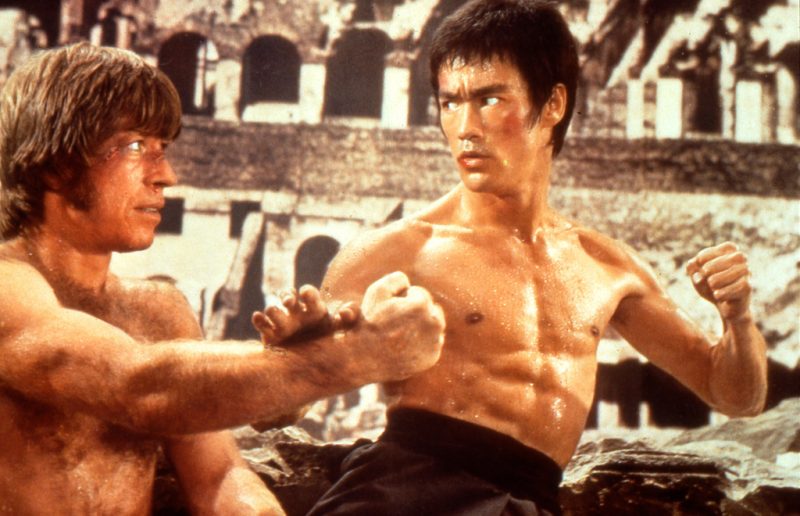
Tang must adapt to survive. Here, Lee demonstrates his own fighting style, Jeet Kune Do, which emphasizes improvisation and flow over rigid techniques. We get a beautiful slow motion wide shot of Tang evading Colt’s attacks and slamming him when he sees an opening. Colt eventually catches on, abandoning his stationary stance and imitating Tang’s dancing footwork, but it’s too late. Both opponents have earned the other’s respect, but only one can leave the Colosseum alive. Cough, not Colt, cough.
Given the grim endings of his previous two movies, it’s nice to see one of Lee’s characters catch a break for once. Not only is Tang not arrested and/or executed in the final moments, his actions don’t lead to his friends and family being brutally murdered (a weird running theme when Wei Lo was directing).
To some extent, Way of the Dragon was a step back from Fist of Fury: a smaller story, smaller stakes, less serious. Though it is not as grand as Fist, or as spectacular as the forthcoming Enter the Dragon, it feels the most genuine, and the best representation of Bruce Lee himself. He put his heart into the film, and it shows. Lee demonstrated that martial arts is about expression over form, that anything is possible, and that even the biggest badass on the planet needs to laugh at himself from time to time. Just when we thought Bruce couldn’t get any cooler, he finds a way.
Director: Bruce Lee
Screenplay: Bruce Lee
Music: Joseph Koo
Cinematography: Tadashi Nishimoto
Editing: Peter Cheung
